Class action lawsuits offer a powerful way for groups of individuals who have suffered similar harm to pursue equitable justice collectively. When joining a class action lawsuit, it’s crucial to understand the potential benefits and the risks. Whether dealing with a defective product or seeking justice for personal injury, knowing how to join class action lawsuits could help you become part of a powerful group united for a common cause.
At Sparrow, we specialize in class action discovery. We help potential class members navigate the complexities of legal actions, including those against large companies. Our team guides you whether you’re addressing a defective product or seeking punitive damages. We stand with you, ensuring your voice is amplified in a group of people facing similar injustices.
Grounded in our extensive experience, we’ve put together this guide that explores the critical steps of how to join class action lawsuits. Our guide provides all the essential details, starting with what a class action lawsuit entails and moving through the eligibility criteria, registration process, and necessary documentation. We will also explore considerations when participating in a lawsuit and provide you with a list of ongoing class action lawsuit cases to join.
Let’s get started!
What is a Class Action Lawsuit?
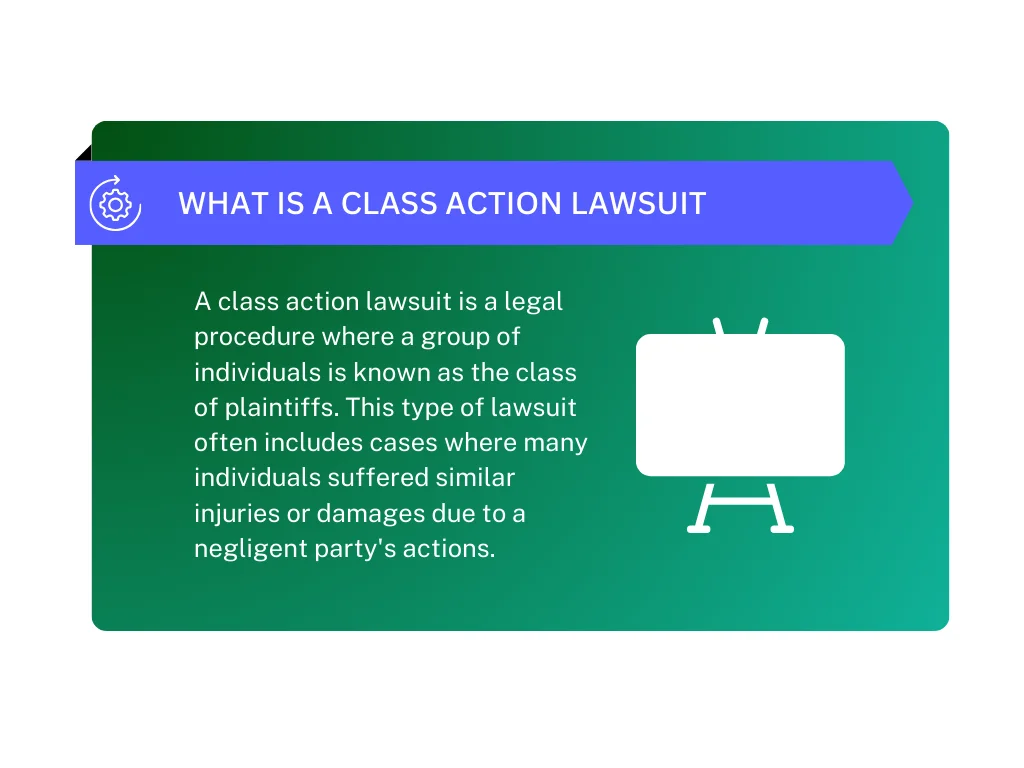
A class action lawsuit is a legal procedure where a group of individuals is known as the class of plaintiffs. This type of lawsuit often includes cases where many individuals suffered similar injuries or damages due to a negligent party’s actions. Class action lawsuits can occur in either state or federal court, depending on the nature of the case and the jurisdictions involved.
Class action lawsuits might involve:
- Defective or Dangerous Products: This category includes cases like faulty appliances or contaminated food that have harmed many and require product liability actions.
- Toxic Exposure: These lawsuits are crucial when groups of people are exposed to harmful chemicals, which can lead to health issues.
- Securities Fraud: Investors come together to sue a company for misleading them about its financial health.
- Illegal or Unfair Employment Practices: Issues like wage theft and discrimination against employees are addressed here, often involving claims related to minimum wage laws.
- Insurance Claims: These address scenarios where an insurance company wrongfully denies claims or imposes unfair policy terms on the claimants.
In class action lawsuits, a lead plaintiff represents the class members. A class action attorney and legal team work on behalf of the class to achieve class action settlements. Legal fees are usually deducted from these settlements.
How to Join Class Action Lawsuit: Step-by-Step Guide
Joining a class action lawsuit can seem daunting, but understanding the process simplifies it. Grasping how to join class action lawsuits ensures you know your rights and the necessary steps. Whether you’ve been seeking justice for defective products or corporate misconduct, following these steps guide you through the process efficiently:

Step 1: Identify a Class Action Lawsuit
The first step in understanding how to join a class action lawsuit involves identifying a lawsuit that pertains to your circumstances. This crucial step sets the foundation for your involvement in a class action case. When looking for relevant lawsuits, consider the following questions:
- What type of lawsuit is it?- Determine whether the lawsuit is related to consumer fraud, product liability, environmental issues, or other legal disputes that might impact you.
- Who is eligible to participate?- Identify the criteria for class membership, which typically include factors like period, product usage, or service exposure.
- What is the goal of the lawsuit?- Understanding the objectives, such as compensation for damages or changes to policy, can help you align your expectations with the case.
- Who is managing the lawsuit?- Knowing which law firm or class counsel handles the case can provide insights into the lawsuit’s management and success potential.
- Where can you find more information?- Utilize resources like law firm websites, public court records, or platforms like Sparrow that specialize in listing active class action lawsuits.
Once you gather this information, you can better determine how the lawsuit aligns with your situation. This initial research is critical in deciding whether to pursue joining the lawsuit. When you understand the scope and aim of the class action, you can proceed confidently, knowing that you are taking the proper steps toward potentially joining a lawsuit that affects you directly.
Step 2: Review the Class Action Notice
When you find a lawsuit that might affect you, your next step in understanding how to join a class action lawsuit is carefully reviewing the notice. These notices provide crucial details and are usually distributed through email or available on relevant websites.
Here are four key considerations when reviewing a class action notice:
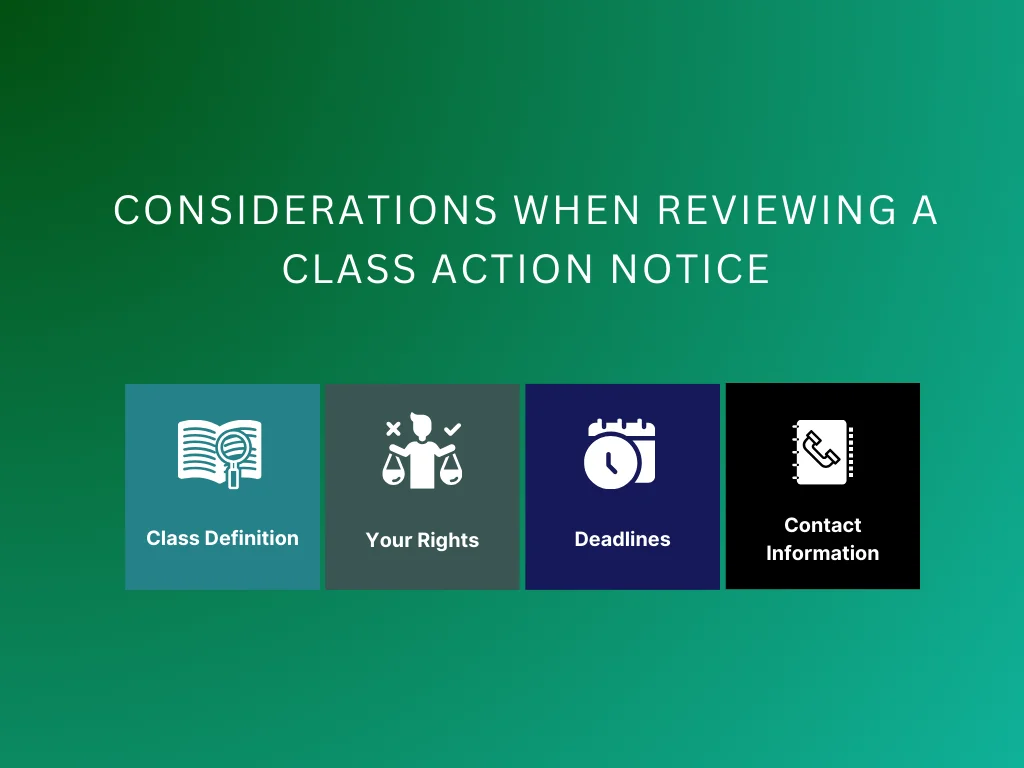
- Class Definition: Pay close attention to the class definition. This part of the notice explains who qualifies as a class member for the lawsuit. It typically outlines the characteristics or actions to be a part of the lawsuit, such as purchasing a particular product during a specified period.
- Your Rights: The notice outlines your rights within the lawsuit, including how to participate or opt-out. Understanding these options is essential as they determine your course of action, whether you decide to stay in the class or pursue individual claims.
- Deadlines: Keep track of any deadlines mentioned in the notice. These include dates by which you need to join the class, opt-out, or submit any necessary documents. Missing a deadline can result in forfeiting your right to claim benefits from the lawsuit.
- Contact Information: A class action notice provides contact details for the class counsel or a claims administrator. This information is vital for any questions you might have or for any additional information you might need regarding the lawsuit.
After reviewing the class action notice and considering these points, you’ll be better equipped to decide how to proceed with joining the class action lawsuit. This careful review ensures you are adequately informed about the specifics of the case and your involvement in it.
Step 3: Verify Your Eligibility
Once you’ve reviewed the class action notice, the next crucial step in how to join a class action lawsuit is verifying your eligibility. Ensuring your situation aligns with the criteria outlined for class members is essential.
Here are five key aspects to consider when verifying your eligibility:

- Specific Criteria: Carefully examine the lawsuit’s criteria for class members. These include specific actions, purchases, or experiences related to the lawsuit’s subject matter. For instance, in a defective product case, you may need to have purchased the product within a certain period.
- Documentation: Prepare to provide documentation that proves your eligibility. This could be receipts, purchase records, emails, or any other documents confirming your involvement during the timeframe specified in the lawsuit.
- Timeline of Events: Ensure that the dates of your involvement match those mentioned in the class definition. This is crucial as it determines whether your experience falls within the lawsuit’s scope.
- Comparison with Class Definition: Compare your situation directly with the class definition provided in the notice. This will help you understand whether your circumstances fit the class parameters.
- Legal Advice: If you need clarification on your eligibility, consider seeking legal advice. A lawyer can help clarify complex aspects of the class definition and ensure that you meet all necessary criteria.
Carefully checking these aspects, you can confirm whether you are eligible to participate in the class action lawsuit. Verifying your eligibility is a fundamental step that affects your ability to join the class action lawsuit and benefit from any settlements or judgments.
Step 4: Register Your Claim
After confirming your eligibility, registering your claim officially is the next crucial step in joining a class action lawsuit. This step involves submitting a formal claim with either the class counsel or through a designated claims administrator. The process is typically managed online, where you can access and complete the necessary forms. It’s essential to complete this accurately to ensure your participation in the lawsuit is recorded.
Registration usually requires proof of your eligibility. This means gathering and submitting documents such as receipts, emails, or any records that confirm your involvement as outlined in the class criteria. Make sure these documents are organized and support your claim. In some cases, additional verification forms are requested to substantiate your claim further, ensuring you meet all conditions for inclusion in the class action lawsuit.
Step 5: Follow the Case Progress
After registering your claim, it is essential to stay actively involved by following the case’s progress. This ensures you are up-to-date with all developments, which can influence your involvement and the lawsuit’s outcome.
Here are five critical considerations for staying informed about the case’s progress:
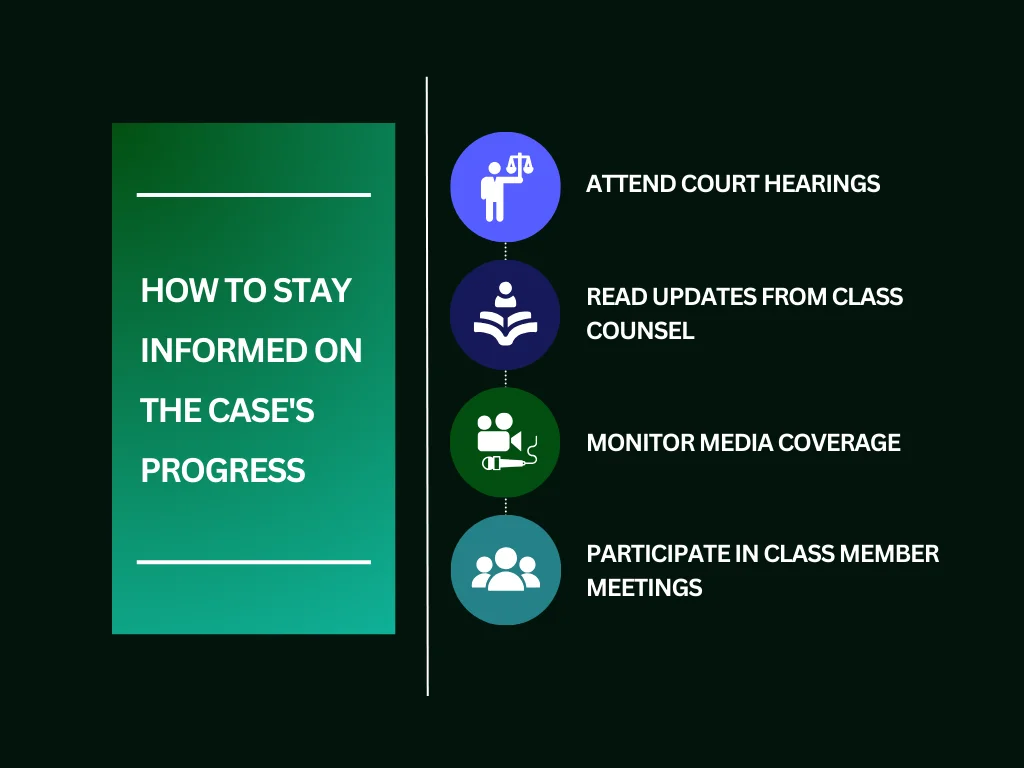
- Attend Court Hearings: Attend court hearings related to the class action lawsuit. These hearings provide firsthand insight into the legal arguments and the case’s direction.
- Read Updates from Class Counsel: Regularly check for updates the class counsel provides. These updates, which may be emailed or posted on their website, contain essential information about the lawsuit’s status, key legal milestones, and any actions you may need to take.
- Monitor Media Coverage: Follow media coverage of the lawsuit. News articles, legal blogs, and financial news can provide additional context and updates on how the lawsuit impacts other parties and industries.
- Participate in Class Member Meetings: If the class counsel organizes meetings or conference calls for class members, participate in these gatherings. They are a valuable opportunity to receive updates, ask questions, and connect with other class members.
Actively following these steps, you ensure that you are well informed about the ongoing developments in the lawsuit. This engagement is crucial as it helps you understand any changes affecting your involvement or potential compensation, empowering you to react appropriately as the case evolves.
Step 6: Receive Your Settlement
If the class action lawsuit concludes successfully or a settlement is reached, the final step involves claiming your share of the settlement. You will receive a notification detailing the steps to claim your portion, typically through email or mail. This notification is crucial as it includes the amount you are eligible for and the specific actions you need to take to receive the funds.
To claim your settlement, you may need to submit additional documentation that verifies your claim, such as proof of purchase or other relevant documents that were initially part of your registration. Alternatively, the process might require you to confirm your contact details and preferred payment method. Follow the instructions carefully and submit any required information before deadlines to ensure you receive your settlement promptly.
Considerations to Take Before Joining a Class Action Lawsuit
Joining a class action lawsuit can be a significant decision, especially in cases like medical malpractice, where individuals seek justice for similar injuries caused by negligence. Before becoming part of a class action, several considerations should be weighed:
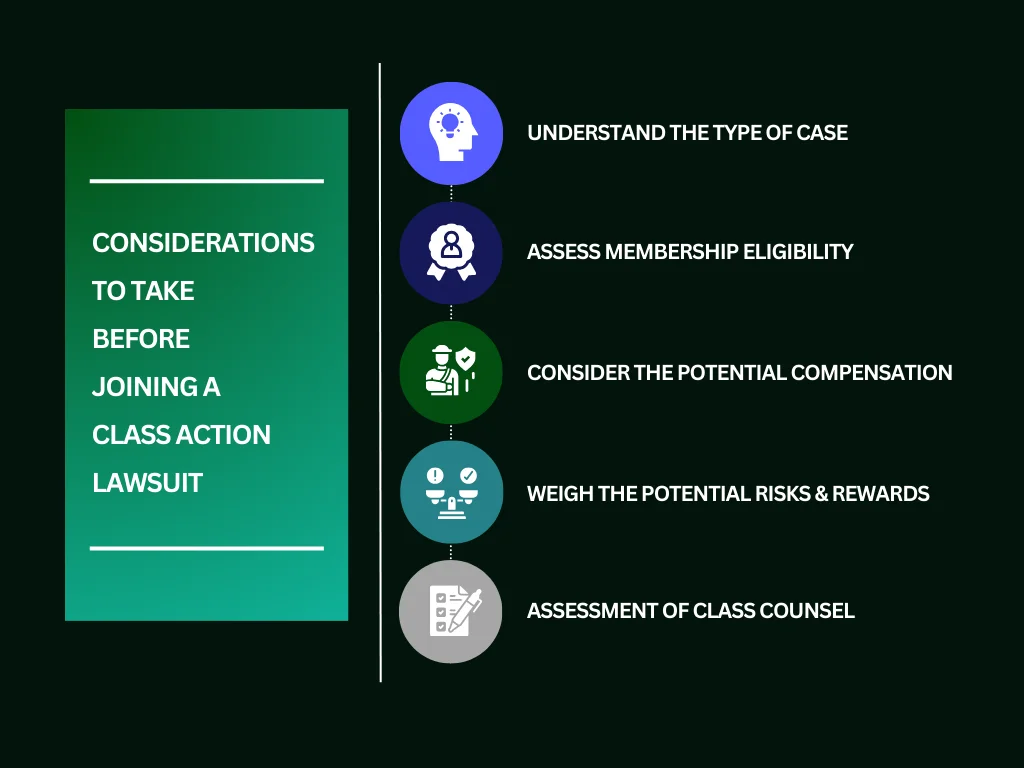
Understand the Type of Case
Class action lawsuits vary widely, from medical malpractice to mass tort cases. Each type of case, whether it unfolds in state court or a larger federal setting, involves unique legal dynamics and outcomes. Knowing the case’s specifics helps you understand what to expect during litigation and the impact it might have on the class members.
Assess Membership Eligibility
To join a class action lawsuit, you must meet specific criteria set during the certification process. These criteria determine who the class members are and whether their circumstances align with the case’s requirements. Always check the class action notice or consult the lawsuit’s law firm to confirm your eligibility.
Consider the Potential Compensation
While the idea of receiving compensation can be appealing, it’s essential to have realistic expectations. Top-class actions sometimes result in significant payouts to class members, but this varies widely by case. Consider the financial outcomes of past cases the involved law firm handled, especially those similar to yours.
Weigh the Potential Risks and Rewards
Joining a class action lawsuit is not without risks. For instance, pursuing an individual lawsuit could yield a higher personal settlement, especially in cases like medical malpractice. Compare the advantages of mass tort participation against those of individual litigation to decide which aligns best with your circumstances.
Assessment of Class Counsel
The effectiveness of the class counsel is pivotal in determining the lawsuit’s success. Research the law firm’s track record in handling similar cases. A law firm with a strong presence in Florida, known for its litigation expertise, might offer better guidance through complex class actions. Ensure that the counsel’s approach to fairness and client communication aligns with your expectations.
Ongoing Class Action Lawsuits You Can Join Now
Amidst legal proceedings, several ongoing class action lawsuits present opportunities for affected individuals to seek justice collectively. Here, we highlight five cases where you can join to assert your rights.
1. Panera Class Action Lawsuit
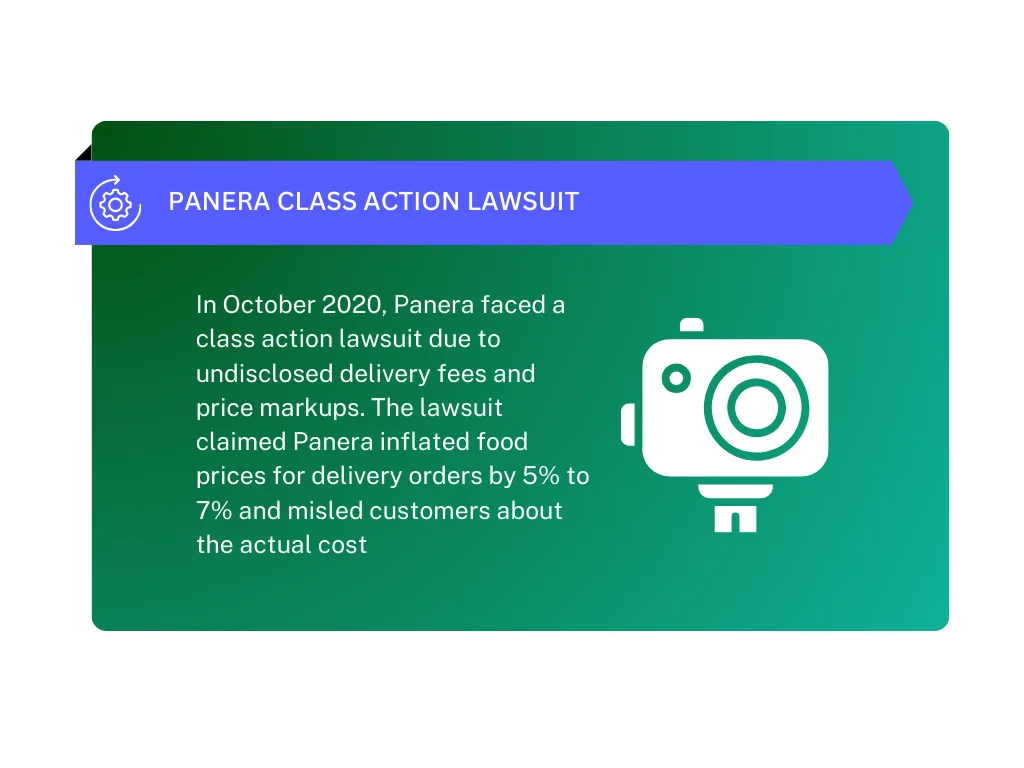
In October 2020, Panera faced a class action lawsuit due to undisclosed delivery fees and price markups. The lawsuit claimed Panera inflated food prices for delivery orders by 5% to 7% and misled customers about the actual cost. In August 2021, a $2 million settlement was reached, managed by Kroll Settlement Administration LLC. Affected customers who used Panera’s delivery service from October 2020 to August 2021 can file a claim.
To join the Panera class action lawsuit, submit a claim form before June 10, 2024. Provide proof of purchase, such as an email notice or class member ID. Claimants can receive a cash award of up to $12 or vouchers for free menu items. Ensure you’re qualified to join a class action lawsuit to claim compensation.
2. Walmart Class Action Lawsuit
The Walmart class action lawsuit involves allegations of deceptive practices in pricing weighted goods and bagged citrus like seafood and navel oranges. In Florida, the lawsuit claims that Walmart overcharged shoppers by inaccurately stating product weights, leading to inflated costs. This case touches on consumer rights and corporate accountability.
Walmart faced accusations of inflating the weight of products like meat, poultry, pork, seafood, and bagged citrus fruits, leading to higher prices. Despite denying wrongdoing, Walmart settled the lawsuit, agreeing to a $45 million settlement fund. Individuals who can substantiate their purchases during the specified period might receive compensation up to $500, based on 2% of their total purchase amount. Ensure to join a class action lawsuit by filing a claim.
3. Seresto Tick and Flea Collar Class Lawsuit
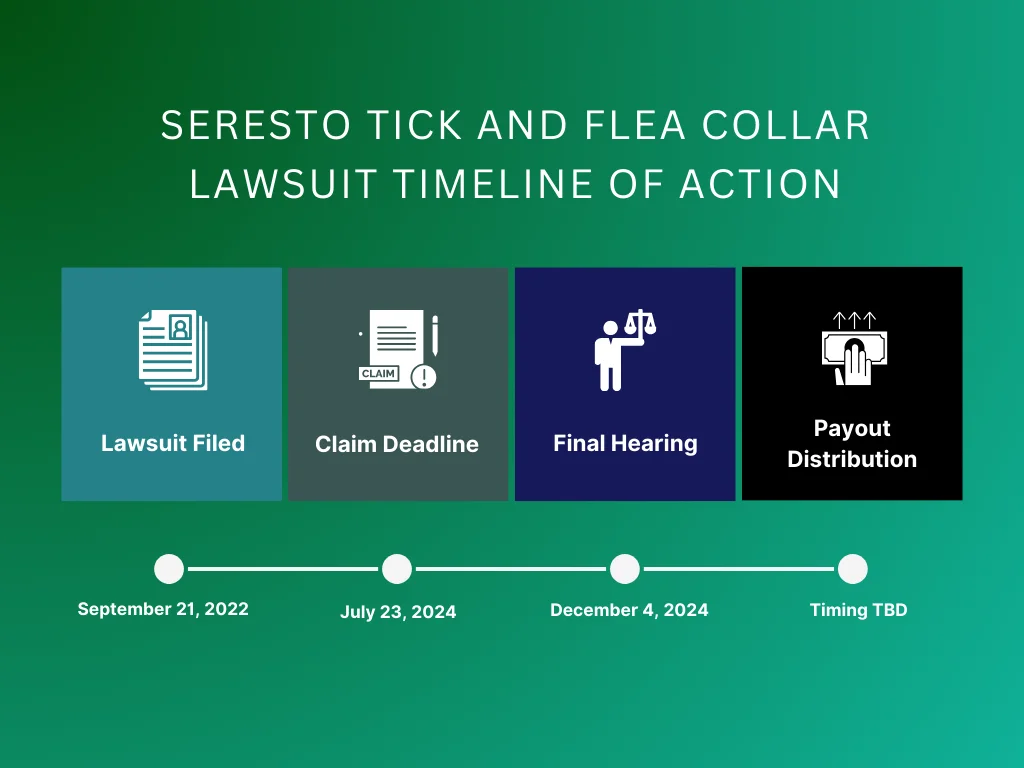
On January 31, 2024, a federal judge in Illinois approved a $15 million settlement in the Seresto tick and flea collar lawsuit. The class action targets Bayer Healthcare LLC and Elanco Animal Health for failing to warn about harmful effects linked to these collars. Filed claims highlight severe health risks to pets, including side effects like lethargy and death. Affected pet owners can file claims based on these allegations.
Submit a claim form before July 23, 2024. If available, provide proof of purchase to join the class action lawsuit. Claimants need proof to receive $13 per collar, with a cap of $26 per pet. Those with proof can claim unlimited amounts. Non-fatal injuries cost $25 per pet or 100% of unreimbursed vet costs. Fatal injuries allow $300 per pet plus 100% of related costs.
4. Naturelo Magnesium Supplements Class Lawsuit
Naturelo agreed to a $1.5 million settlement over claims that their magnesium supplements did not contain as much bioavailable magnesium as advertised. The class action lawsuit argues that Naturelo’s magnesium glycinate chelate 200-milligram supplements were misleading, with the capsules not being large enough to contain the advertised amount of high-quality magnesium glycinate chelate. Instead, they allegedly used lower-quality forms like magnesium oxide.
To join a class action lawsuit to claim compensation, submit a claim form by May 28, 2024. Class members can receive up to $24.95 for one purchased unit without proof of purchase. With proof, there is no payment cap. Eligible purchases must have occurred between September 1, 2018, and February 28, 2024.
5. Hernia Mesh Class Lawsuit
Hernia mesh lawsuits involve thousands of cases across the United States, targeting mesh manufacturers like Bard, Johnson & Johnson, Atrium, and Covidien. These lawsuits allege defective hernia mesh implants caused severe complications, including chronic pain, infections, and hernia recurrence. The average payout for a hernia mesh lawsuit varies widely, from $50,000 to $1,000,000, depending on the severity of injuries and individual circumstances. Recent settlements have compensated victims significantly, highlighting the ongoing impact of these defective medical devices.
To join the hernia mesh lawsuit, affected individuals must prove complications related to the hernia mesh, such as infection or migration. You must submit a claim form within the state’s statute of limitations. Eligible claimants can expect the average payout to cover medical expenses, lost wages, and damages. Knowing how to join a class action lawsuit ensures you receive the compensation you deserve for health damages.
Key Takeaway
Many people are unaware of the importance of participating in most class action lawsuits. Understanding how to join class action lawsuits helps eligible individuals claim their rightful compensation. When people find they meet the eligibility criteria for an ongoing class action lawsuit, they must gather all necessary information and documents to support their claim.
Individuals should understand the process before joining a class action lawsuit. You should check their eligibility for ongoing lawsuits and prepare their documents. These considerations ensure they can navigate the process smoothly. Contact a legal professional or use a class action discovery platform to streamline the submission process.
Ready to take the steps on how to join a class action lawsuit? Sparrow simplifies this process. We’ll guide you through claiming funds from class action settlements, allowing you to quickly expand your understanding and participation in these lawsuits.

